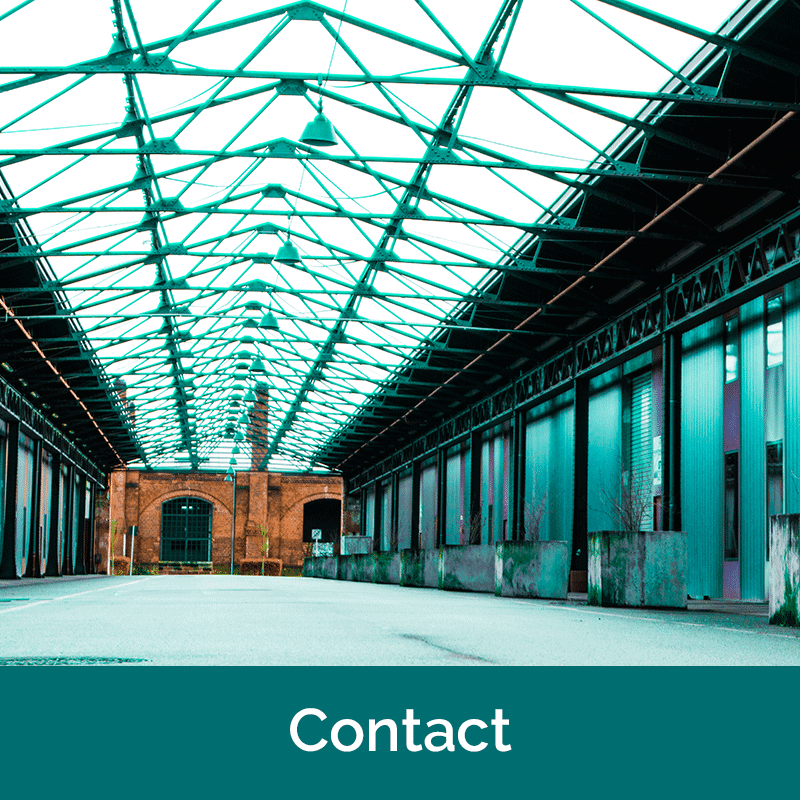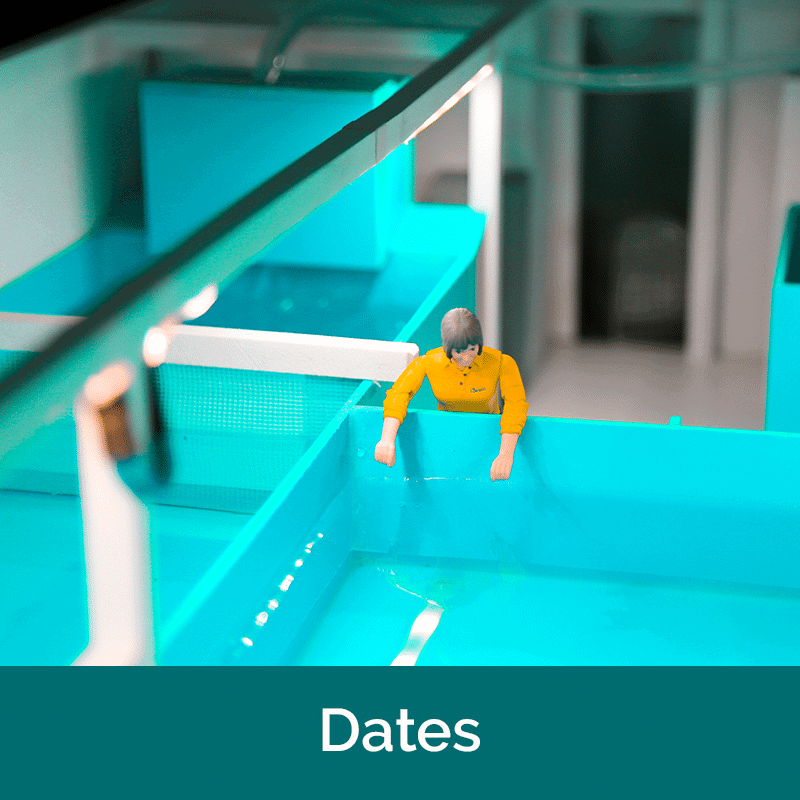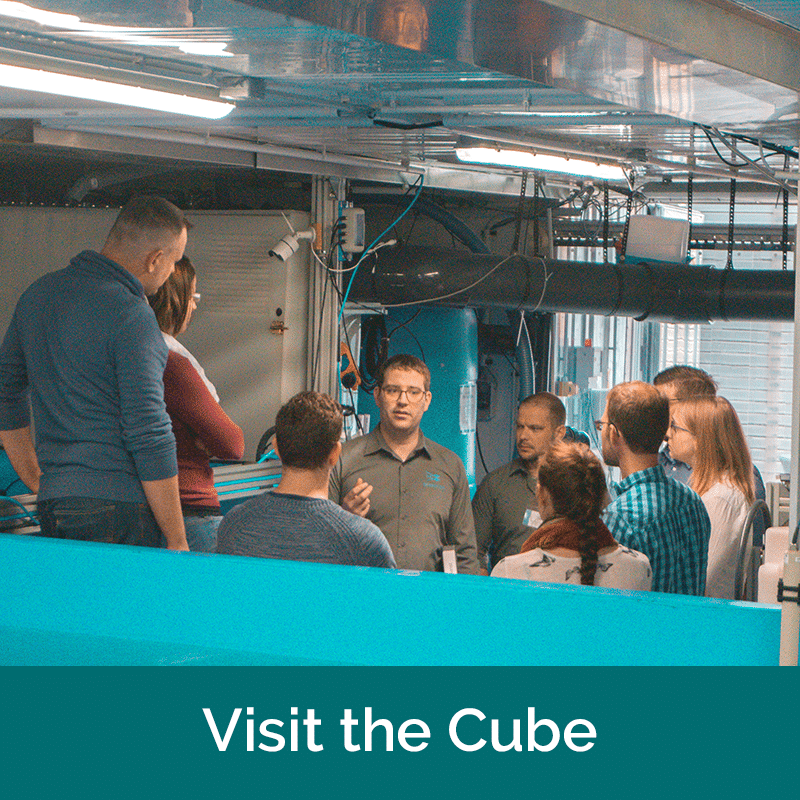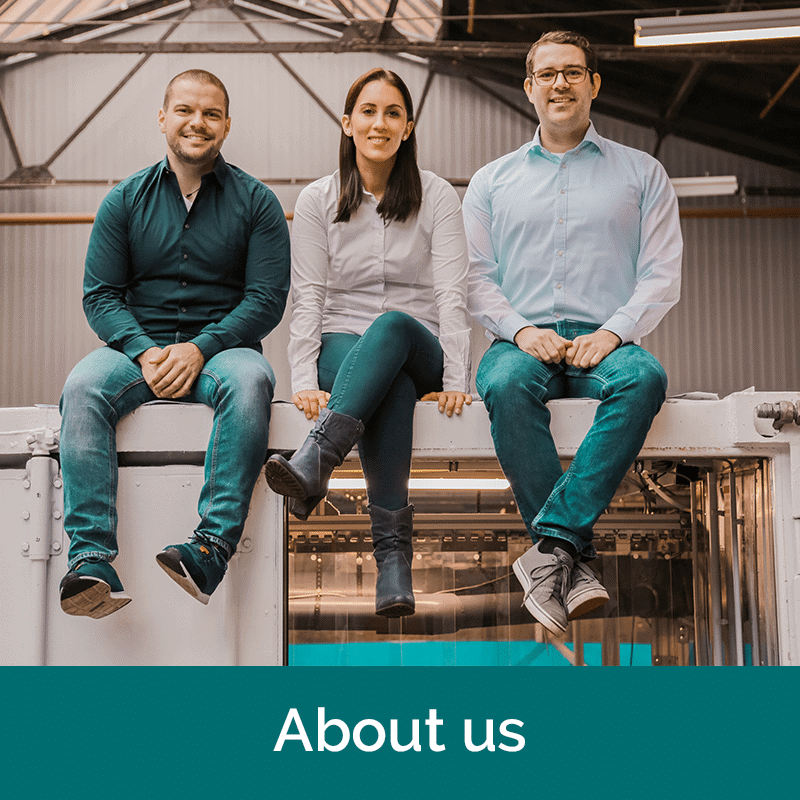FAQ
Cube
Engineering
What are the measurements of the system?
The Cube is composed of four 40 foot containers. The external dimensions of the system are 12,20m x 9,70m. Additionally, you should calculate a manoeuvring space of minimum 1,00m for the installation of the Cube.
Are the containers insulated?
Yes, we use reefer containers as a case for our Cube. They are designed to transport frozen goods and insulated with 7–10cm PU foam.
How much power does one Cube need?
The system requires electricity around the clock. Around 85,000 kWh are generated per year (75,000 kWh for the mast, 10,000 kWh for processing). If solar panels are installed on the roof of the plant, this can cover around a third of the electricity requirement.
Is it possible to stack the Cubes?
Yes, theoretically it is possible to stack the cubes. The containers are in transportation operation full loaded stackable for ten times. Practically we have not developed a concrete concept with a structural engineer yet. So far it is not certain if the stacking is very practicable in regarding with fishing, total weight/soil condition and supply with feed and auxiliary materials.
What does ‚fully automated‘ mean?
Fully automated means, that besides the control of the aggregates, pumps and filters the monitoring and controlling of all process parameters (pH-value or salt concentration) works fully automated as well.
Where does the software come from?
We developed the controlling software ourselves.
Water
Which water do I need?
The Cube is filled with tap water which gains its salinity by adding a special mixture of sea salt minerals. It may also be possible to use well water, but that requires an analysis of its composition before.
How much water is needed?
One Cube contains 70m³ of water. That equals 70.000 litres.
How much waste water accumulates?
In our system we recycle 99% of the water and produce only 1% waste water per day. That equals 500 litres. The loss of water is primary a result of evaporation and wastewater due to rinsing the mechanical filters.
What can be done with the waste water?
There are different possibilities to use the sewage water:
Does the water have to be changed completely at some point?
No, the basin is fully filled with the commissioning of the Cube. Afterwards you only replace the daily loss of 500 litres.
What is the water temperature?
The water has an average temperature of 24 degrees Celsius. In the winter time, the water is cooler and in the summer it is warmer. The fish can grow best at temperatures between 18 and 28 degrees Celsius.
Does the water need to be heated or cooled?
Due to the usage of insulated containers and an air-to-air- heat exchanger in the system, it is not necessary to heat the tap water. It is rather necessary to cool the water on a day to day basis in case of an extreme heat waves in the summer. Appropriate cooling units can be rented from us.
Costs, delivery & legal
Can you deliver the Cubes to other countries besides Germany?
We can ship the Cube to other countries in Europe as well as overseas thanks to the shipping containers which form the basic structure of our product. We currently focuse strongly on the German market and plan internationalisation in the medium term.
How long is the delivery time for one Cube?
Due to the lead time at our suppliers, we currently need six to eight to pre-assemble a system. We have the capacity to produce several systems in parallel.
How long does it take till one cube is installed on-side?
The set-up of one Cube on-site only takes a few days.
What do I need to set up a Cube?
To set up a Cube you need a building permit and a strip foundation.
Do I need a special training or education to operate a Cube?
The requirements for the system operation are different in every federal state (in Germany). In some states you only need a license for fishery. In others you need a certain training for fish farming. The potential operator can get all information about the legal situation at the responsible ministry for environment and consumer protection.
In order to bring clarity to the topic, we offer a specially developed expert training course on the subject of recirculation technology, currently only in German. More information and registration here. More information here.
Which permits do I need to process the fish?
At first, you need an approval for the slaughter and processing parts from the local state office for consumer protection. Besides that, all workers who are in contact with food need to show an instruction in accordance with § 43 infection protection law (Germany). This food hygiene instruction can be absolved for the first time at the Ministry for Health and then it can annually refreshed internal.
System operation
Operation
What are the typical tasks during the operation of the Cube?
The daily tasks include in particular the controlling tasks. First of all it is important to do a visual control of the fish in the basin. Than you have to check the data that is documented in the software, clean the sensors and monitor the function of the filters. Furthermore you have fill the feed and salt automats up to two times a week. Besides that it is really important to keep the basin and the whole cube clean at all times.
What is the weekly expenditure of time?
For the whole management of one Cube from operation, processing, distribution to sales you need around 40 hours in total per week. The plain operation of the Cube only takes 8 hours (Ø 1 h per day) und the processing 20 hours. In a larger operation with multiple Cubes you can achieve great synergy effects through more efficient processes and reduced work time. In case of a four container module you only need around 120 hours per week.
How many employees are necessary?
It makes sense to employ one part time worker and two temporary workers for the operation of one Cube to have all shifts covered even in case of illness or vacation. For the operation of four Cubes, we recommend three full time workers and one temporary worker.
Are there certain sources of danger related to fire, people or water?
Fire: there are no particular sources that could cause a fire. There is only the general risk that comes with the usage of electrical aggregates (pumps, compressor)
People: the general safety regulations of the employer’s liability insurance association apply. Additioanaly the risk of drowning remains. For the buffering of the pH-value and the operation of the denitrification we use acetic acid and caustic soda as a substrate in different mixing ratios. The typical regulations (personal protection equipment) apply.
Water protection: our Cube is a closed system without a connection to any body of water. The tap water comes from the pipeline network. The waste water is lead into the local waste water system. Furthermore we use disinfectant to clean the equipment which can have water contaminating effect in a high concentration. The manufactured mixed concentrations that we use are harmless.
Processing
How does the fishing work?
The fishing is done by hand. First the fishes get narrowed with a trawl to be caught in a landing net.
How does the fish get killed and processed?
After the fishing we put them in a with water filled container. After that electricity is conducted into the water so that the fishes get anesthetized, so they do not feel anything. Then they are put into iced water where the organism shuts down. After a while, when the fishes are a dead, their stomach gets cut open and emptied. For the removal of the intestines we use a machine that remines of a vacuum. Eventually the abdominal area is cleaned with brush.
Where do the fish get killed and processed?
Next to the Cube we offer an additional container for the killing and processing of the fish. One processing container is sufficient for up to four Cubes. If you have an already existing facility that is tiled to the ceiling you can use that as an alternative.
What happens to the intestines?
The intestines are stored in a specifically intended bin. They get picked up every 1–2 weeks from a special company for dispose, that is specialized on food disposal.
How is the fish stored?
The fishes are stored in a cold storage in specially intended boxes for fish on ice at a temperature of 0° Celsius. Due to that, the fishes are cooled optimal and fresh for a long time without being completely frozen.
How long is the fish durable?
Freshly processed, correctly stored and with a uninterrupted cold chain (0° Celsius on ice) the fishes fresh for at least ten days.
Marketing & Sales
What is the market price per kilogram of fish ?
Market prices vary for each fish species and depend on the origin and quality of the fish. In the fresh sector, sea bass from conventional aquaculture (Greece, Turkey or Croatia) is around €30 per kg for the end consumer. Organic quality from aquaculture is available for around €35 per kg. Wild-caught fish costs up to €60 per kg.
Depending on the region (and therefore production costs, e.g. due to higher rents), our customers sell their fish for between €30 and €40 per kg.
Can I get support from SEAWATER for sales & marketing?
Yes, we offer you support. Specifically, we founded a cooperative in 2024 with one of our customers and a fish distribution expert. It is called ‘Die Geflossenschaft e.G.’ and is open to you if you operate a recirculation system and want more security in marketing. All producing members receive a certain purchase guarantee as part of a supply contract. As a Gefloss member, you can also use the brand, use the online shop as a platform and there are centrally managed marketing and sales measures to promote your location. If you are interested, please contact your colleagues in the Geflossenschaft. More information here.
Where can I buy your fish?
You can buy our fish in our online shop under www.seawaterfish.de. You can also find a variety of products that we produce from our fish.
Fish
Fish species
For which fish species is the Cube suitable?
The Cube is suitable for all sea or saltwater fishes that live in warm water and do not grow too big. These include sea bass, gilthead, yellowtail kingfish, red snapper, barramundi and other exotic species. Actually, we cannot grow salmon and tuna fish because they live in cold water (and cooling is very expensive in a closed system) or rather grow too big for our basin.
Can I grow fresh water species in the Cube?
Yes, we can adjust the system for freshwater species. Please send us an individual request if you are interested in this.
How much fish can I grow in one year?
It depends on the type of fish. For sea bass and sea bream, 7.8 tonnes of round fish can be bred per year.
Seedlings
Where can I get the seedlings?
Depending on the species you can get the seedlings from different hatcheries all over the world. Usually, the hatcheries only deliver larger quantities, you can order small amounts of seedlings through us. We although take care of the transportation of the seedlings to your place.
How often do I need new seedlings?
News seedlings are put in the Cube three times a year.
How many seedlings do I need?
That depends on the fish species. For sea bass or gilthead seabream, you need approximately 7400 seedlings each time they are put into the Cube.
How big are the seedlings?
The seedlings whey approximately 3–5 gram when they are put into the Cube.
Fish feed
How much feed is needed?
If the Cube runs on full capacity, you need 25kg food a day. The software manages the amount of feed for each age group of fish in coordination with the average weights for the different cohorts. The feeding coefficient of the Cube is 1,1.
What are the main components of the feed?
There are different types of feed for each age group in our basin. That is mainly composed of:
- corn, soy- and sunflower protein
- fish flour and fish oil (a side product from the procession of fish for human nutrition)
- krill flour (zooplankton)
- wheat
Where is the feed from?
We buy the feed from the Alltech Coppens, a company in the Netherlands. You can get all information regarding their sustainability concept here. In the long term, we plan to produce our own feed based on sea weed or algae. Actually, we apologize for the inconvenience that we, as a small start-up, can’t control the whole value chain and rely on the information that are provided by our suppliers.
How does the feeding work?
The system feeds the fishes in each cohort automatically depending on the stocking density. Meaning that the software knows every day the number and the average weight of each cohort. Based on that the software calculates the amount of feed that is necessary automatically to stay on the growth curve.
Where is the feed stored?
In the Cube there are three automatic feeders. Each contains a filling volume of 120 kilograms and can store the feed for a few days. Furthermore the feed can be stored outside of the cube in a dry and cold place in sacks or big packs.
Didn’t find the right answer?
Feel free to contact us using our contact form! We will then contact you and answer your question as soon as possible.



